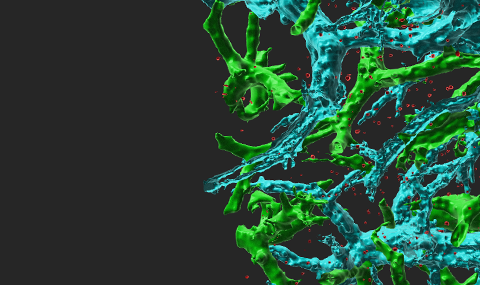The lungs are one of the most immunologically active organs in the human body. We are interested in dissecting the vascular signals that control leukocyte migration and function in clearing viral and bacterial infections, with a focus on influenza infection (Movie 1) and vaccination. We have also established in vivo murine experimental models for smoke and LPS induced airway inflammation. We unraveled major protective roles of the tumor suppressor DAPk both in the context of LPS and smoke induced lung inflammation. DAPk null mice exhibit profoundly higher sensitivity to both tobacco smoke and LPS challenges and develop a more severe chronic obstructive pulmonary disease (COPD)-like disease. We have also elucidated the involvement of a key extracellular matrix remodeling enzyme, the heparan sulfate degrading enzyme heparanase, in smoke induced lung inflammation. Although expressed by a variety of effector leukocytes, including T cells and neutrophils, the ability of these leukocyte subsets to cross blood vessels and enter either lungs or inflamed lymph nodes or skin, does not require heparanase activity. We also dissect the adhesive functions of the integrin ligands ICAM-1 and ICAM-2 on multiple lung cells. These IgG superfamily cell adhesion molecules are highly expressed on both hematopoietic and non hematopoietic lung cells but are dispensable for initial neutrophil recruitment to inflamed lungs and for clearance of bacterial infections.

INVESTIGATING LEUKOCYTE TRAFFICKING AND METASTASIS

